- Excellent electric-only range
- New suspension tune improves dynamics
- Good value for a plug-in hybrid SUV...
- But still expensive for an Outlander
- Not the newest kid on the block
- Dated interior with many blank buttons
You may not know it, but the Outlander PHEV plug-in hybrid medium SUV has been a big success story for Mitsubishi. Revealed in 2012, the Outlander PHEV has since sold almost 300,000 units largely thanks to Europe’s switch to electric and plug-in vehicles for lower emissions. It’s been a sales phenomenon in Europe, but here in Australia – where the emissions standards are much older, and petrol is still cheap – sales of any PHEV/EV are tiny by comparison. To help combat this, the 2021 Mitsubishi Outlander PHEV GSR has just been launched to inject some enthusiasm into Mitsubishi’s Outlander.
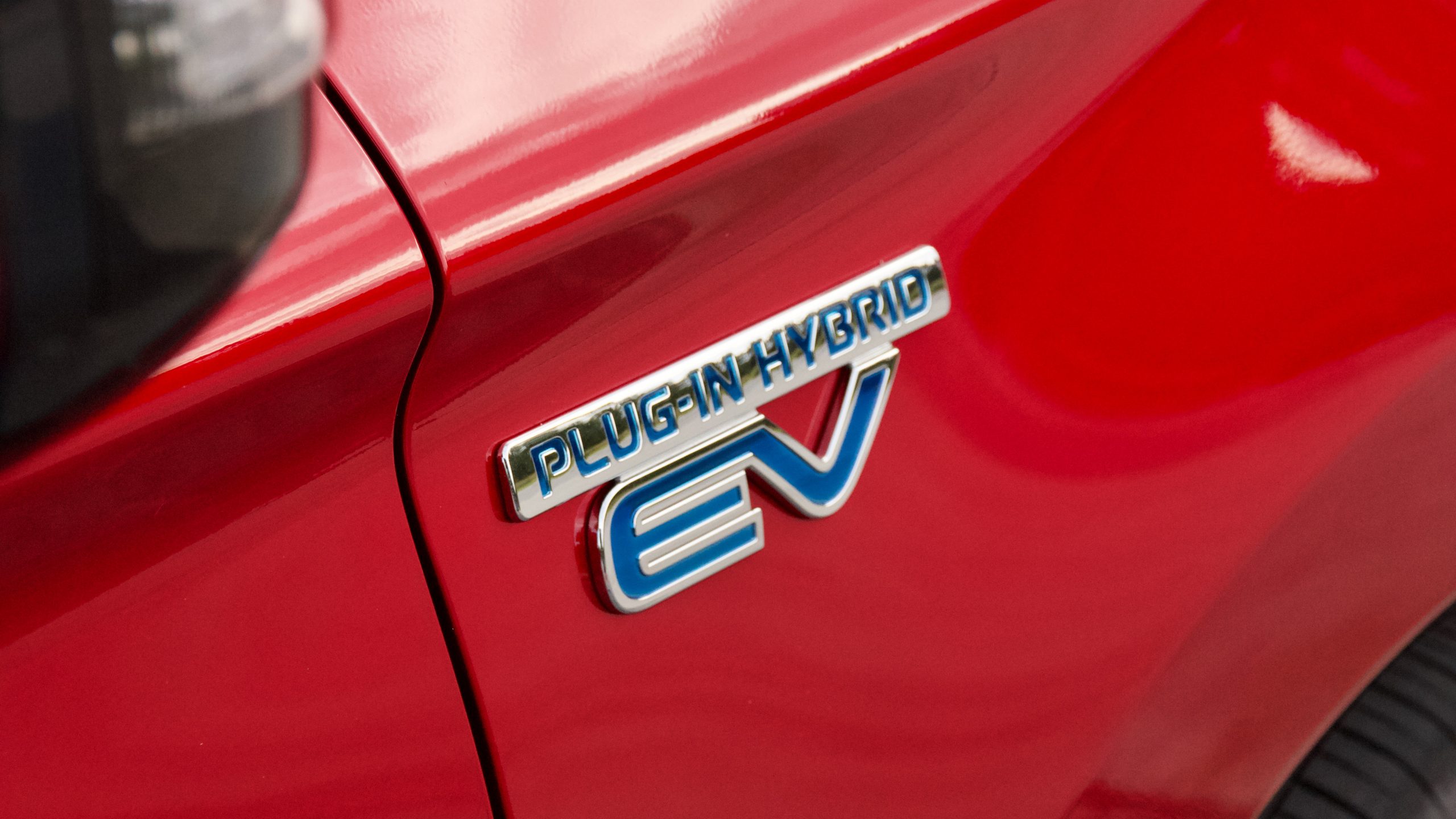
Originally upon its Australian release in 2014, the Outlander PHEV used a smaller 2.0-litre engine. But as part of a recent upgrade, the engine grew to 2.4-litres without affecting efficiency – and the new GSR spec tested here was added as well. Using a traditionally sporty badge such as GSR on a plug-in hybrid SUV may seem cheeky, but it signifies the significantly better ride and handling balance that the badge has added through Bilstein dampers. PHEV SUVs are still rare for this price, so is the 2021 Outlander PHEV GSR worth considering?
Price & Equipment: 7/10
In Australia, there are three versions of the 2021 Mitsubishi Outlander PHEV currently on sale: the base ES ($51,990 drive away), the mid-spec GSR ($56,490) and the top-spec Exceed ($60,990). Unlike lesser Outlander models, the PHEV is purely a five-seater thanks to the extra space in regular models for seats taken up by the drivetrain.
Standard kit on the entry-level PHEV ES includes 18-inch alloy wheels, auto lights and wipers, an 8.0-inch touchscreen with Apple CarPlay and Android Auto, digital radio, a six-speaker sound system, keyless entry and start, rear USB charging ports, an electric parking brake, dual-zone climate control with rear air vents, rear privacy glass, heated front seats and a leather steering wheel and gear knob.
Safety kit includes seven airbags, auto emergency braking (AEB) with pedestrian detection, lane departure warning, adaptive cruise control, auto high beam and a reversing camera with rear parking sensors. A 5-star ANCAP rating also features.
We tested the mid-spec GSR, which adds two-tone alloy wheels, black exterior details including roof rails, Bilstein suspension, a power tailgate, front parking sensors, LED headlights with headlight washers, LED front fog lights, water-repellant suede/faux leather upholstery, an eight-speaker sound system, heated and auto-folding mirrors, an electric driver’s seat and blind-spot monitoring with rear cross-traffic alert.
The top-spec PHEV Exceed doesn’t include the GSR’s sportier exterior detailing but does add a 360-degree camera, satellite navigation, speed sign recognition, access to a smartphone app to control the locking and to set a charging schedule, a sunroof and full-leather upholstery.
Competitors to the 2021 Mitsubishi Outlander PHEV are non-existent for the moment – until the Ford Escape PHEV arrives later in the year – as PHEV SUVs are usually much more expensive than the Outlander’s sub-$60k asking prices. If you want a regular hybrid SUV or want efficiency but don’t have access to charging points, the Toyota RAV4 and Subaru Forester are both available in self-charging hybrid form.
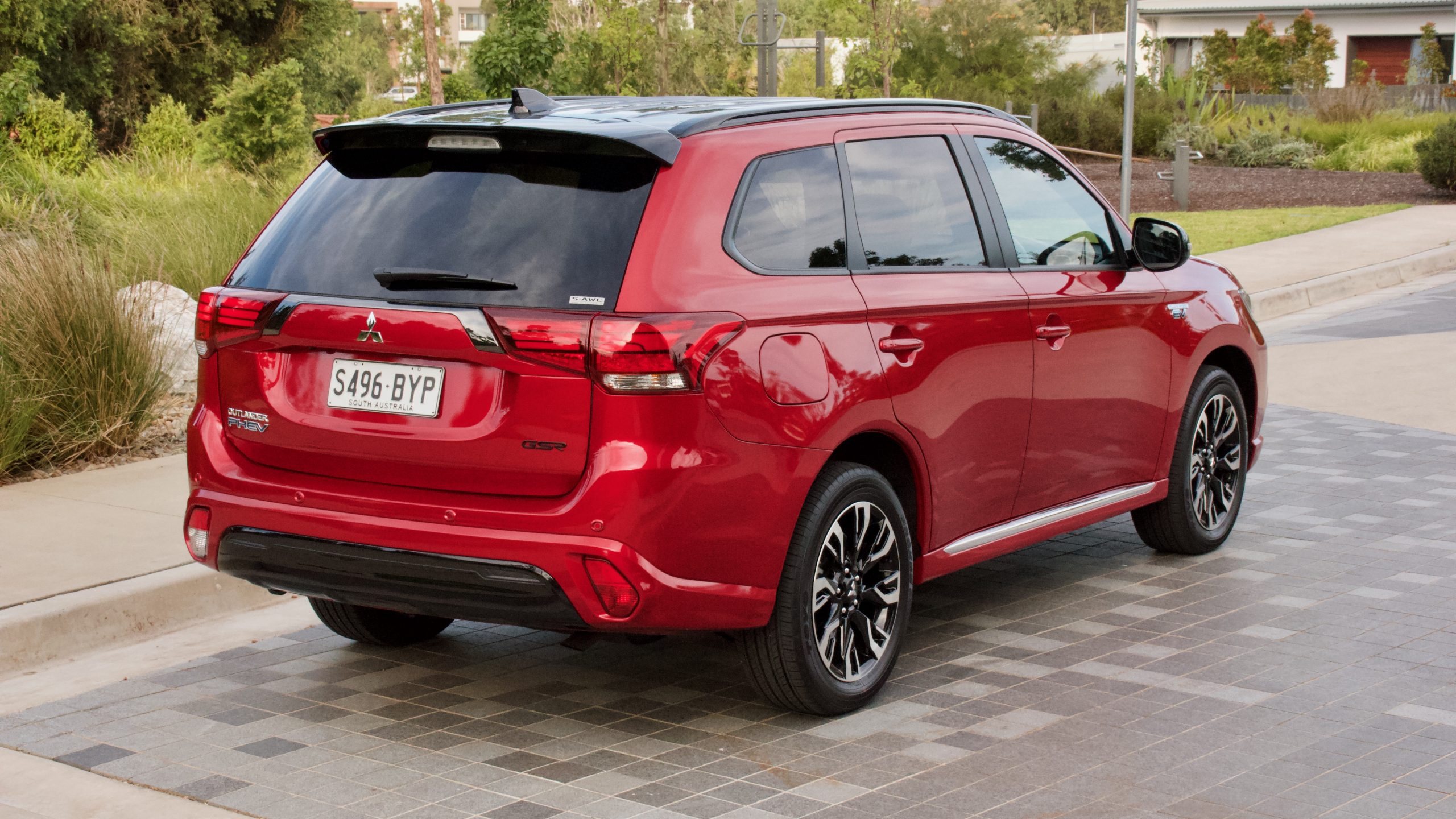
As a plug-in hybrid, we think the Outlander PHEV represents good value for money but there is an elephant in the room: the regular Outlander, which can be had from around $30,000. Battery packs and hybrid systems are expensive to engineer and install, which is why they cost more than the cars on which they’re based. But considering the regular Outlander sells mostly because of its value equation, the jump to the PHEV – especially in a country such as ours that offers zero incentives to buy them except for good fuel economy – will be a bridge too far for some buyers.
Performance & Economy: 7/10
Under the bonnet of the 2021 Mitsubishi Outlander PHEV GSR is a 157kW/332Nm 2.4-litre four-cylinder petrol engine that’s supplemented by two electric motors: a 60kW/137Nm front unit and a 70kW/195Nm rear unit. The electric motors are fed by a 13.8kWh lithium-ion battery pack mounted under the floor, and in total, the PHEV’s output is 157kW/332Nm, which makes it easily the most powerful Outlander currently available.
Mitsubishi claims the PHEV’s total electric driving range is 54km, and we achieved 52km on hot days that needed heavy air-conditioning use, which we think is impressive. After the electric driving range is depleted, the Outlander PHEV switches to driving like a regular hybrid where regenerative braking supplements the battery pack, which then sends power to the wheels for the car to use where it can.
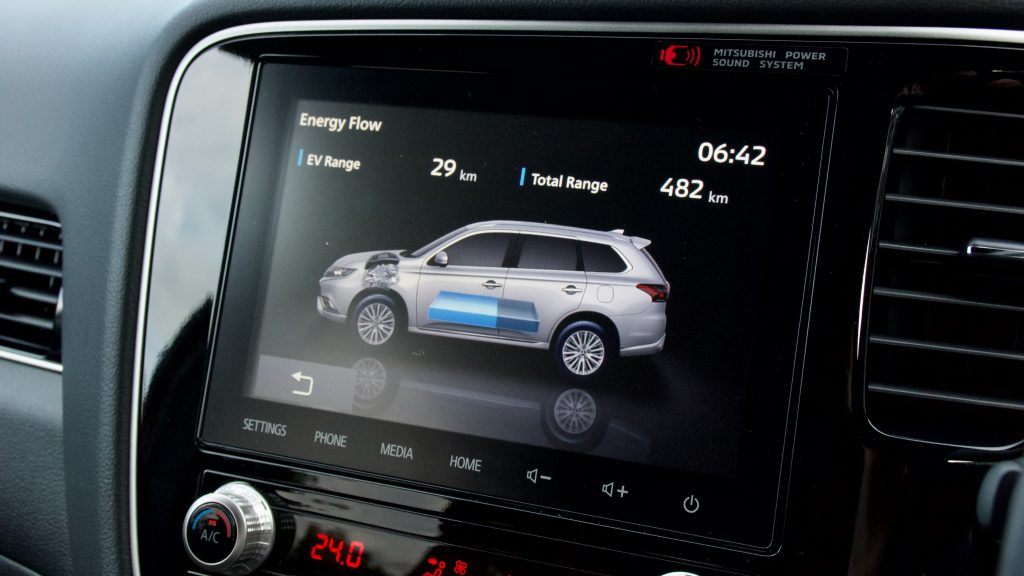
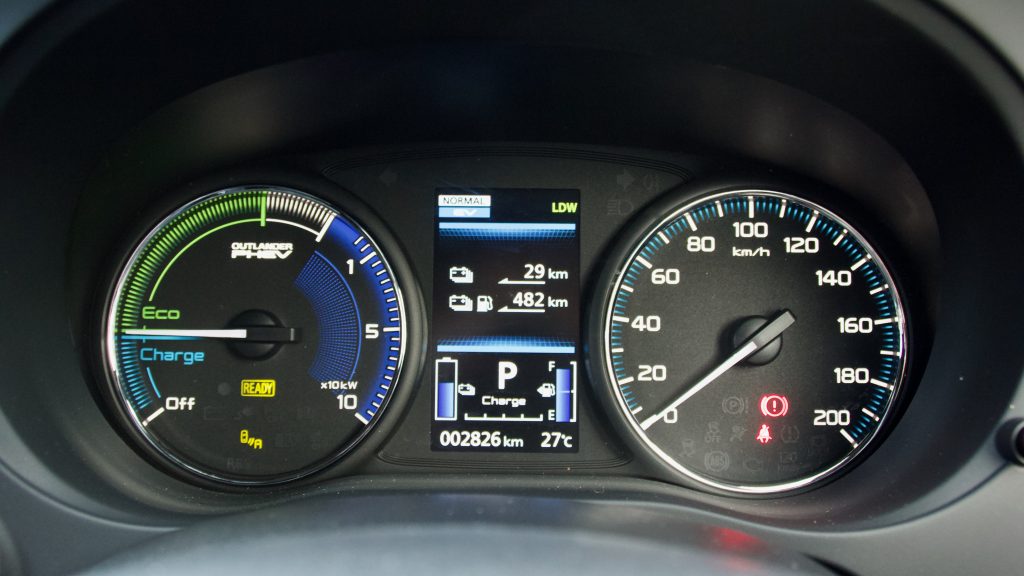
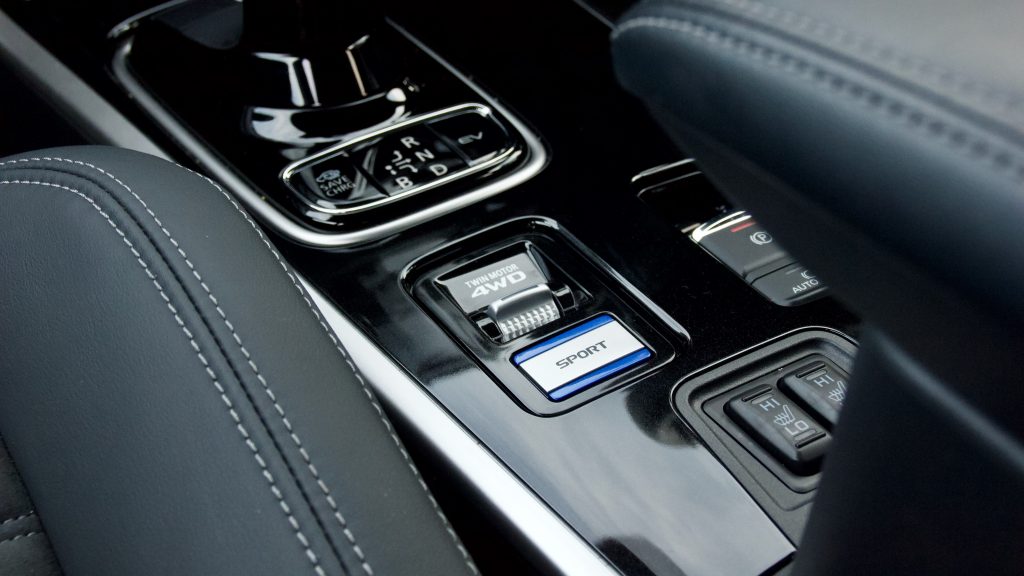
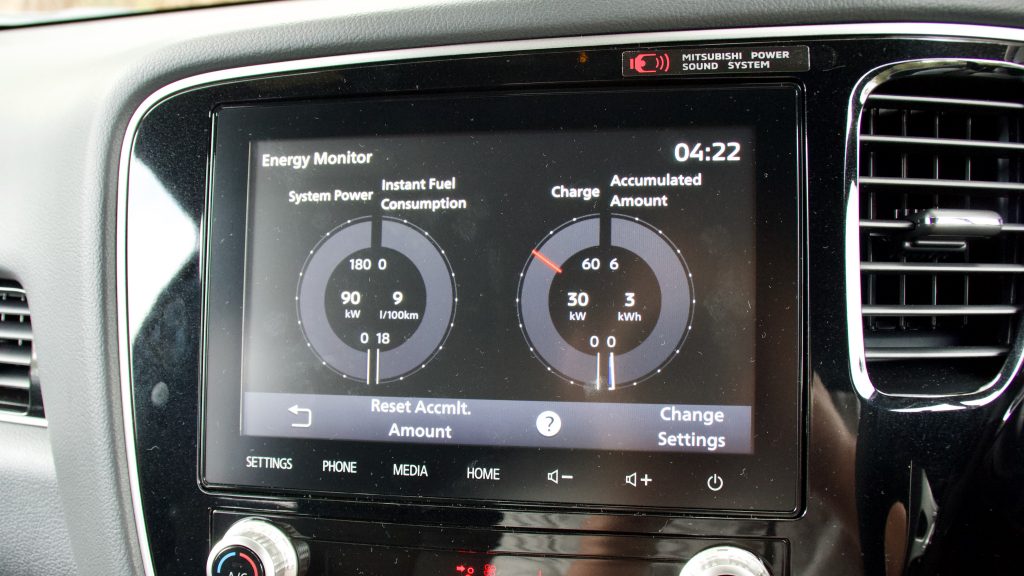
But because the Outlander’s battery pack is larger than something like a RAV4 hybrid, it weighs more and this increases the fuel use when the car is in hybrid mode – we achieved 8.2L/100km, which is obviously much higher than the claimed 1.9L/100km.
To get the best out of the PHEV, you really do have to tap into its electric motor and while there are a variety of charging options, even charging it using a regular house socket will have its battery full overnight. Using a higher output charger lessens this – a DC fast charger, for example, charges from 0-80 per cent in as little as 25 minutes.
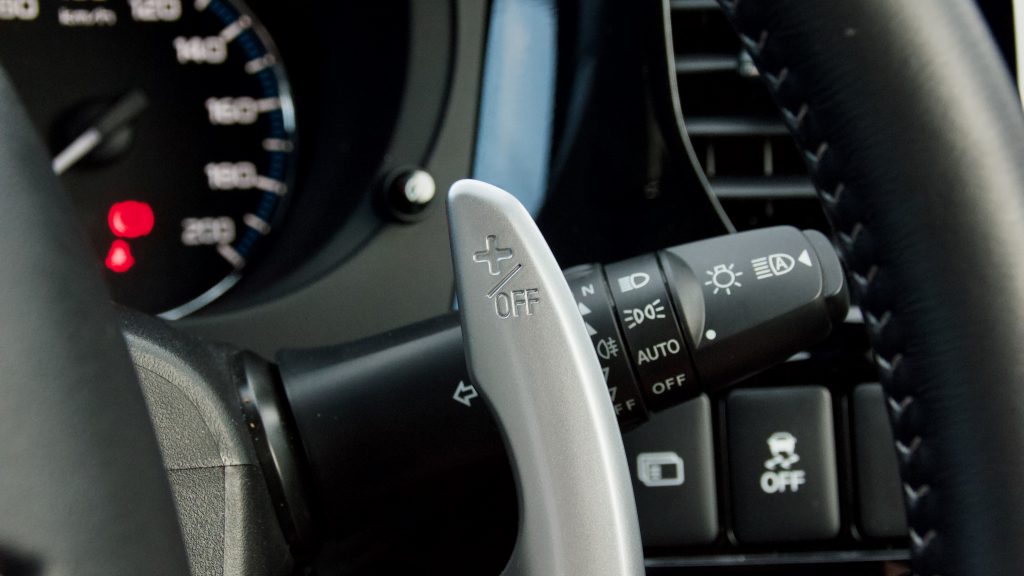
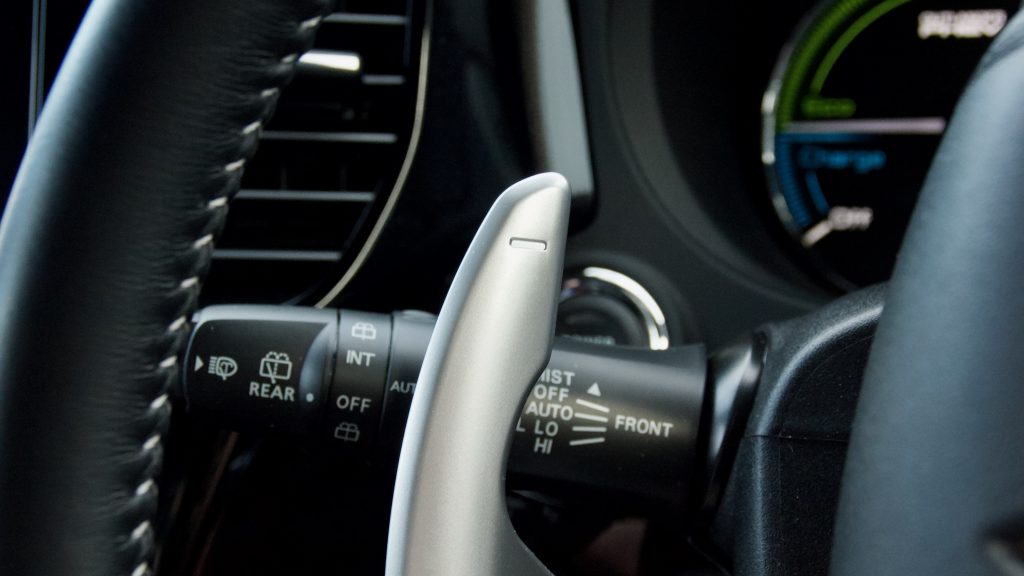
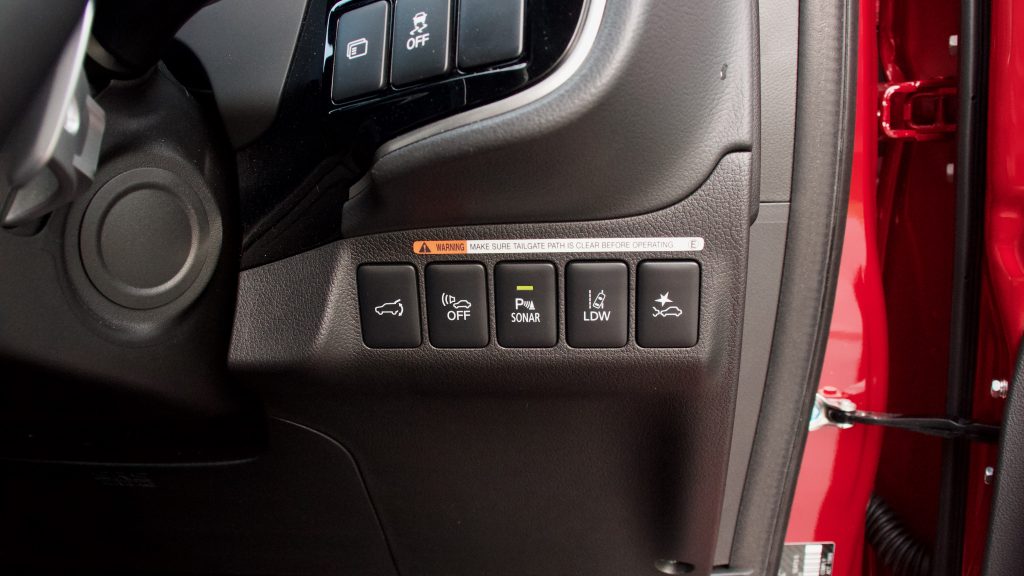
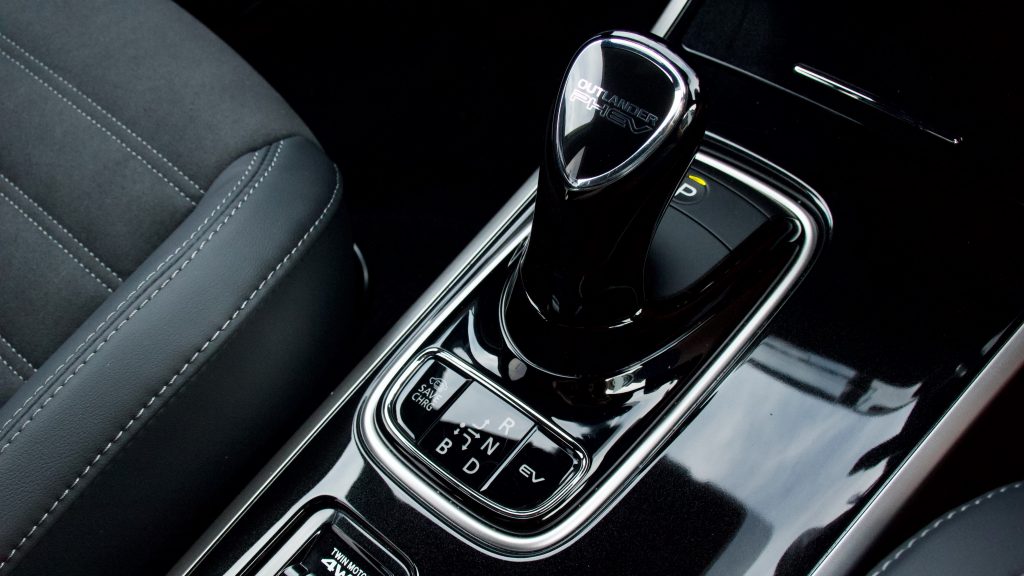
The performance of the 2021 Mitsubishi Outlander PHEV is not stellar, but it’s more than enough for most buyers. 0-100km/h is dealt with in around 10 seconds, but the real performance benefit of the PHEV is just how spritely it feels around town. Prod the throttle in electric or even hybrid mode and the instant torque of the electric motors is felt and it’s quite surprising. The PHEV features paddle shifters as well to change the regenerative braking – have it on maximum B5 mode and you barely have to use the brakes, all while adding juice to the battery.
Ride & Handling: 7/10
The platform underneath the 2021 Mitsubishi Outlander PHEV is nudging 16 years old, which means that it’s certainly not the sprightliest or most agile car around. Yet despite an old platform, the Outlander PHEV GSR’s recent suspension upgrade to Bilstein dampers has made it feel more modern. Mitsubishi will try and sell the GSR as sporty but don’t buy into that; the retuned ride and handling balance is improved for every day driving and the best part is that it’s exclusive to the GSR only – the ES and Exceed feature the old tune. Gone is the wooden, lumpy feel around town and the new Outlander copes with bumps much better, without reaching the highs set by, say, a Volkswagen Tiguan or Mazda CX-5.
Add the new suspension to Mitsubishi’s S-AWC all-wheel drive system and the PHEV can be a reasonable amount of fun behind the wheel. While this writer didn’t try it with this car, previous experience in sand in a PHEV has shown that there are parts of the Lancer Evolution’s spirit in this car – it just now rides and handles better as well.
We’ve also tried the PHEV in proper off-road conditions and while it wasn’t as strong as something like a Pajero Sport, it’s certainly more capable off-road than you’d expect. Only the lower-hanging rear electric motor hinders (not helps) the experience, but the added torque from the electric motors makes the PHEV better than you’d expect. Only the light and oddly weighted steering detracts from the overall experience, but overall visibility is great thanks to large windows.
Interior & Practicality: 7/10
While the 2021 Mitsubishi Outlander’s platform is over 15 years old, the current generation of car was released in 2012. Since then, there have been numerous updates to the Outlander, including new exterior lighting and a big upgrade to the interior with new screens, new materials and for family buyers, important items such as rear air vents and charging ports. Despite the upgrades though, it does feel dated inside with a plethora of blank buttons and cumbersome screen menus that let the side down. There isn’t even a digital speedometer!
Material quality is reasonable, though – especially in the GSR with its suede and faux-leather upholstery that extends to the door panels as well. There are soft touch plastics on the top of the dashboard and front door tops, while hard plastics cover the rest of the cabin. The use of piano black trim does inject more of a quality feel; however, it is very dark inside the Outlander PHEV GSR’s cabin.
Centre of the Outlander’s cabin is an 8.0-inch touchscreen with wired Apple CarPlay and Android Auto, as well as digital radio – though no inbuilt navigation, which you must step up to the Exceed for. The menus are like the trip computer: somewhat cumbersome to use, though easy to get used to – there’s just a lack of modern cohesion to the Outlander’s cabin. The screen quality is fine, the response time is reasonably quick, and the eight-speaker ‘power’ sound system is surprisingly punchy.
It’s a practical cabin with reasonable door bins, plenty of storage spots in the centre console and a large glovebox – the rear seat also has nice door bins, vents, two USB-A ports and a centre arm rest. But only a single map pocket – and four automatic windows but only from the driver’s panel? C’mon, Mitsubishi.
Bootspace is listed at 463-litres – 14L less than the non-PHEV Outlander – and folding the seats (which is done by moving the seat bench forward first) opens 1,602L of space. Unlike the lesser PHEV ES, the GSR features an electric tailgate – though it’s very slow to open. But unlike pretty much any other brand’s electric tailgates, you can turn the electric part off if you like.
Service & Warranty: 10/10
Like all other Mitsubishi products in Australia, the Outlander PHEV is covered by a 10-year/200,000km warranty, which is the longest term on offer in Australia. Buyers must service their car at a Mitsubishi dealership to earn the full ten years, though. Outlander PHEV battery packs are also covered for eight years/160,000km.
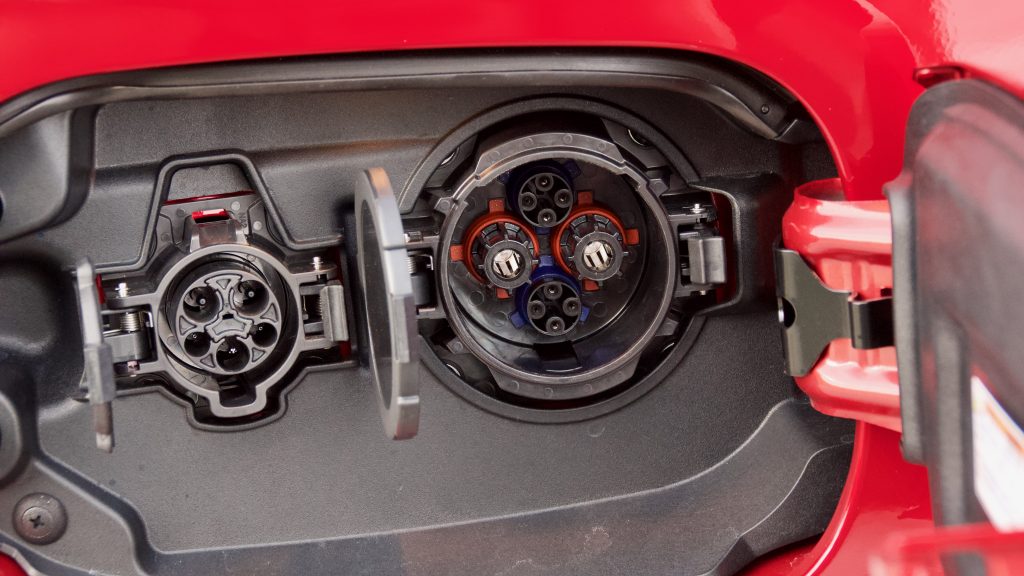
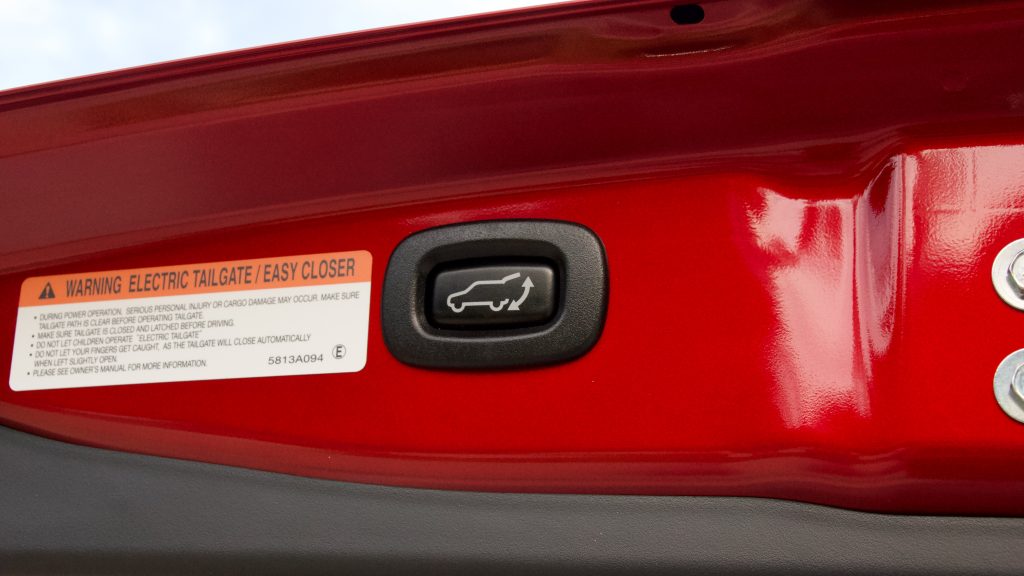
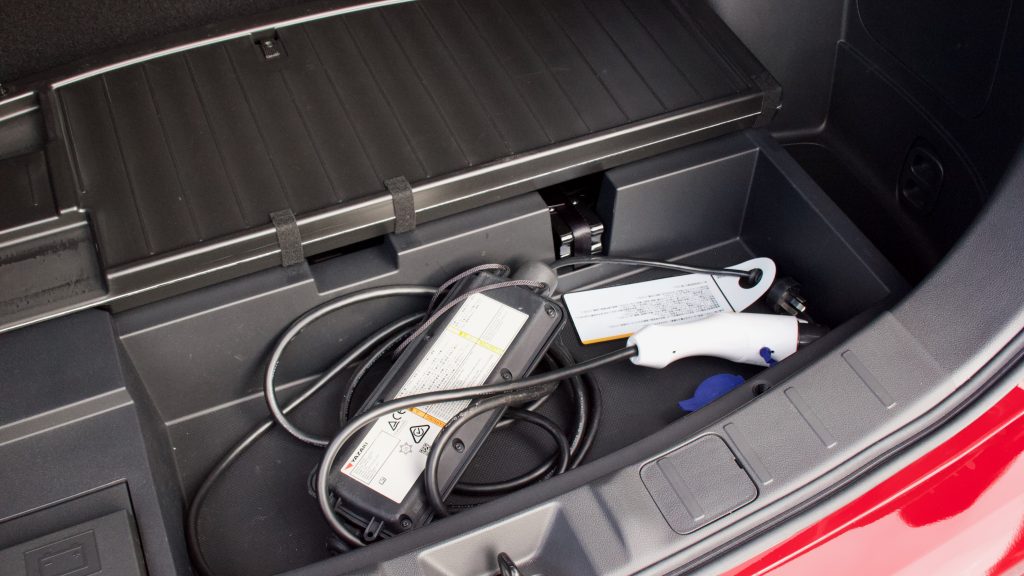
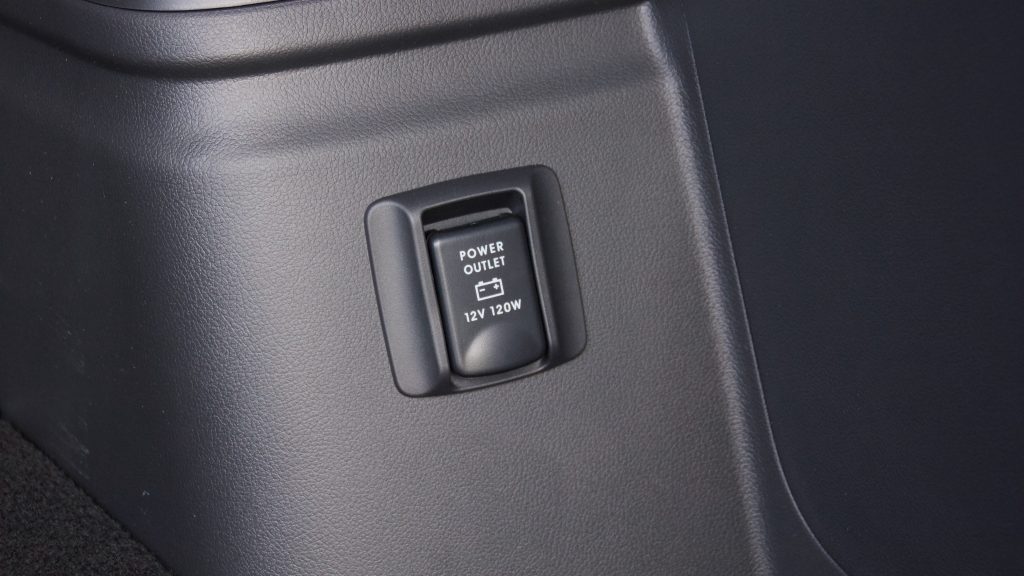
Mitsubishi’s roadside assistance program lasts for 12 months but is topped up by 12 months with each scheduled dealership service for up to five years in total. The capped price servicing for the Outlander PHEV lasts for ten years, and the first five years/75,000km costs $1,795 ($359 per year).
The DiscoverAuto 2021 Mitsubishi Outlander PHEV Rating: 7.8/10
It’s easy to see why the 2021 Mitsubishi Outlander PHEV has sold so strongly in markets where plug-in hybrid sales are significantly stronger in Australia. In addition to around 50km of electric driving range, the Outlander PHEV is practical, comfortable, has a great warranty and it’s loaded with kit – including a lot of active safety tech. Although it looks expensive in comparison with the cheapest versions of the Outlander, it’s well priced for a plug-in hybrid.
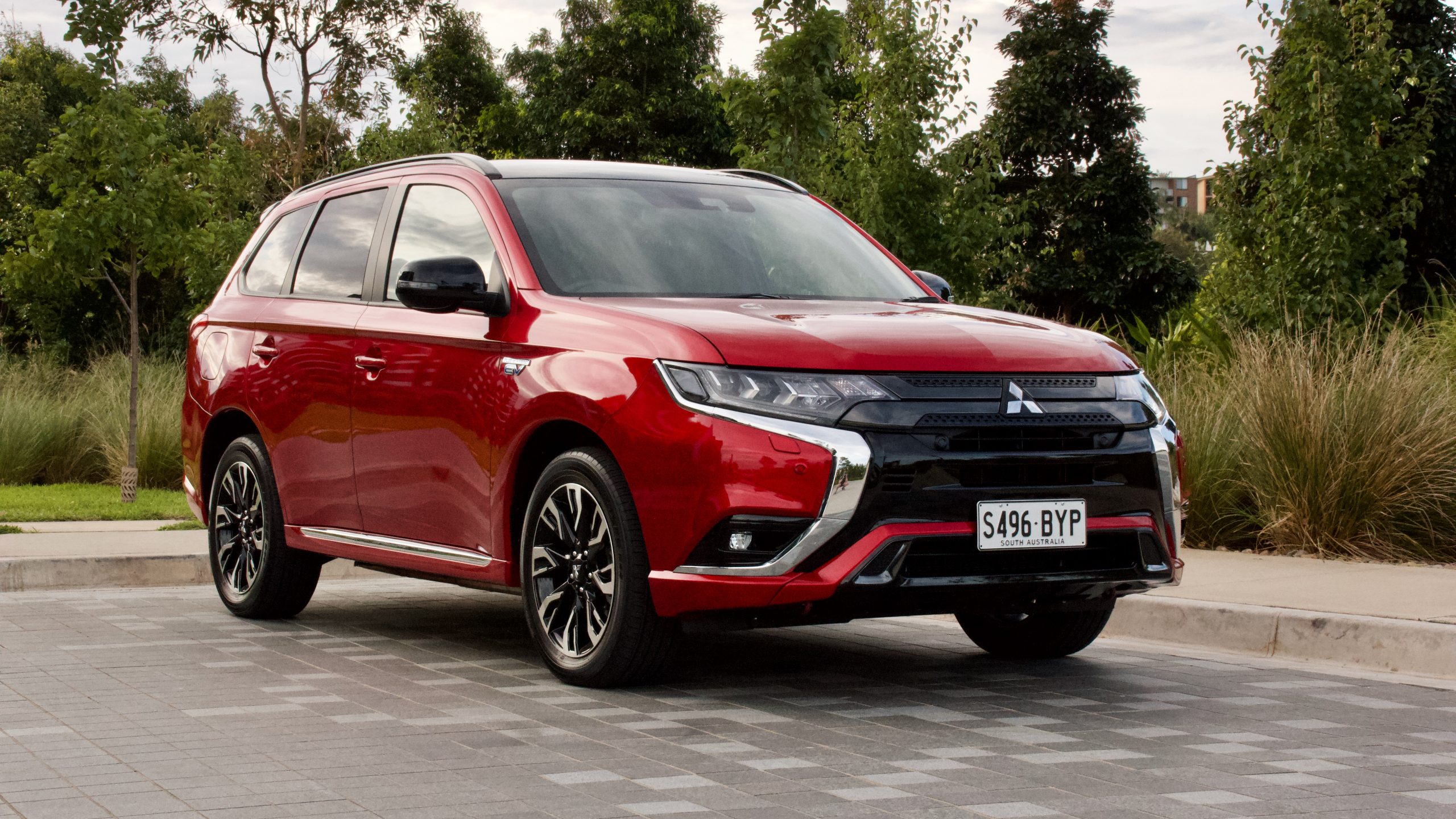
Of course, it’s not the newest car around – a new generation Outlander is due in Australia this year – and like other plug-in hybrids, not having access to charging stations renders it almost useless as it’s then carrying around two drivetrains and fuel consumption climbs rapidly. But the GSR badge and its sporty Bilstein dampers has really improved the PHEV’s ride and handling balance, and the larger 2.4L engine has provided extra grunt without affecting efficiency. This is what the Outlander PHEV should have been all along and it remains a rather interesting offering in a segment so dominated by underwhelming petrol powerplants.

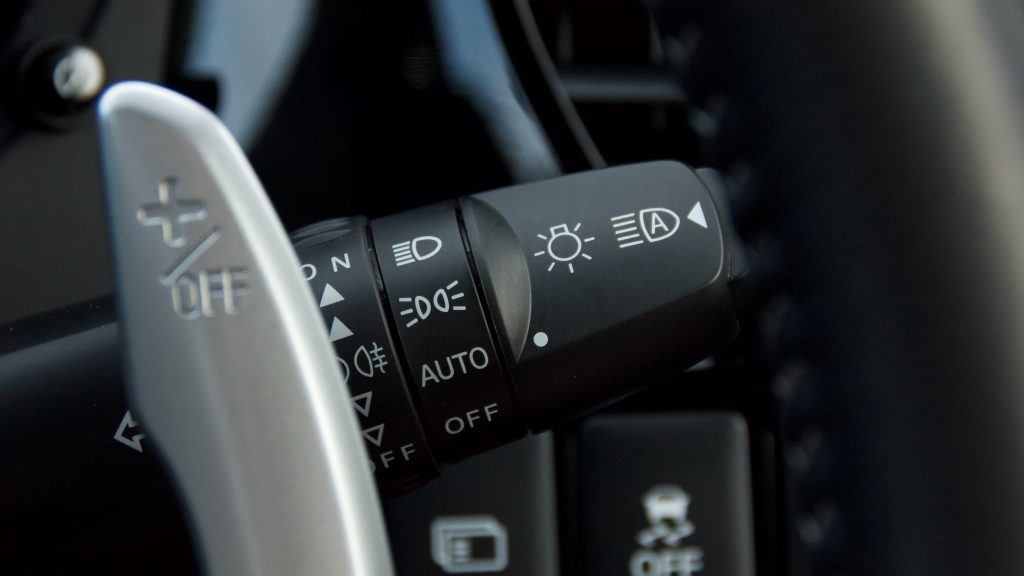
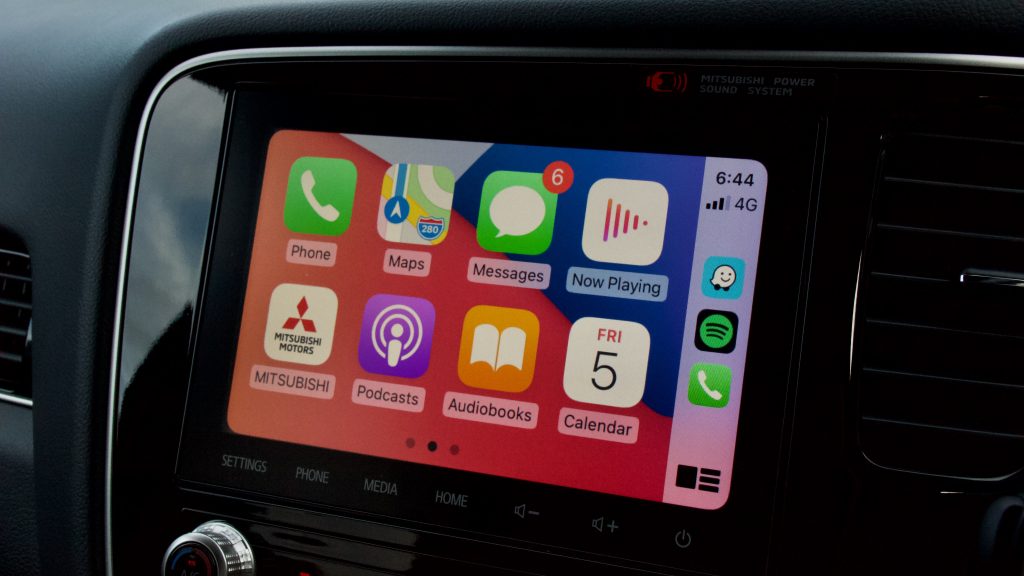
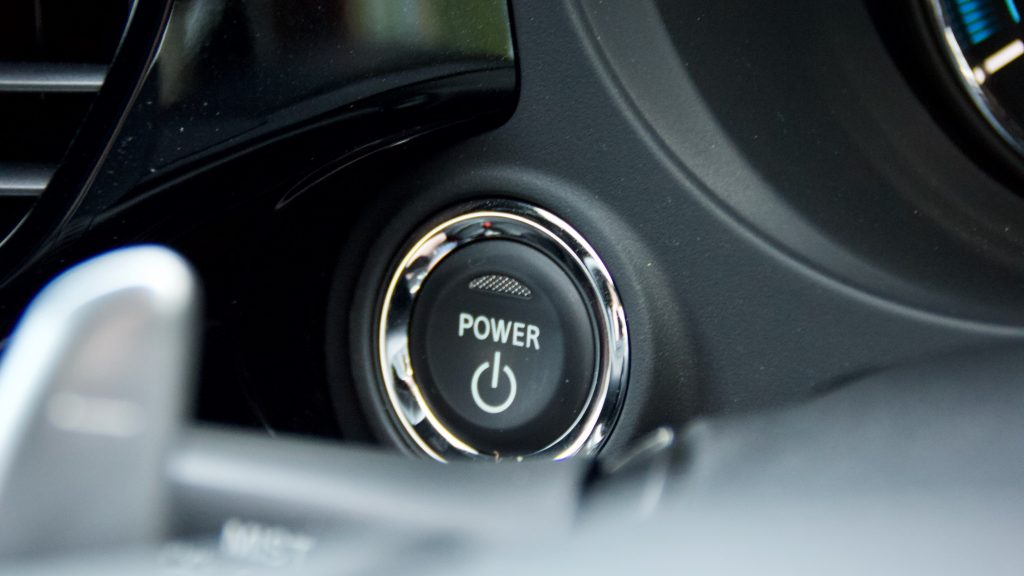

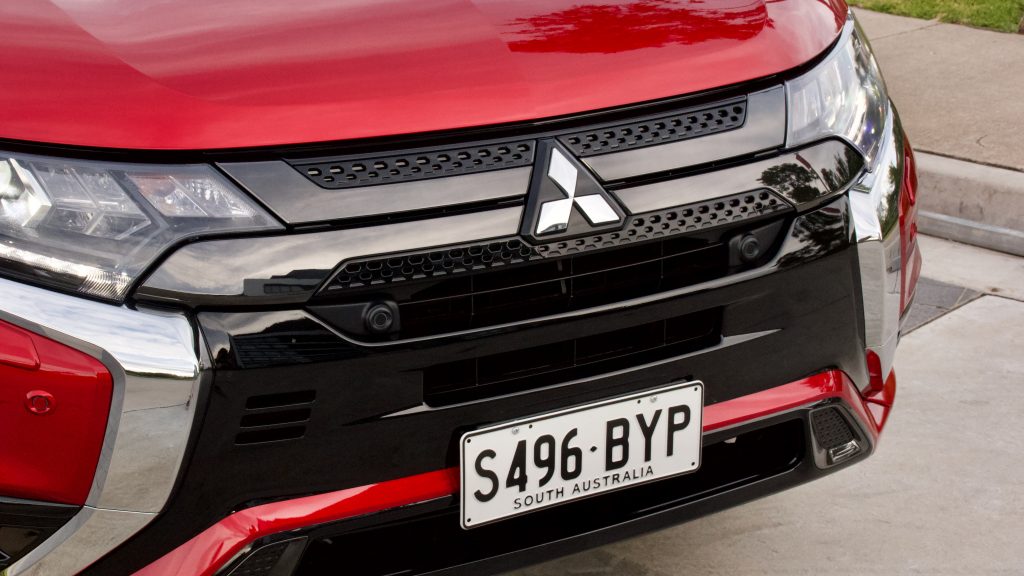
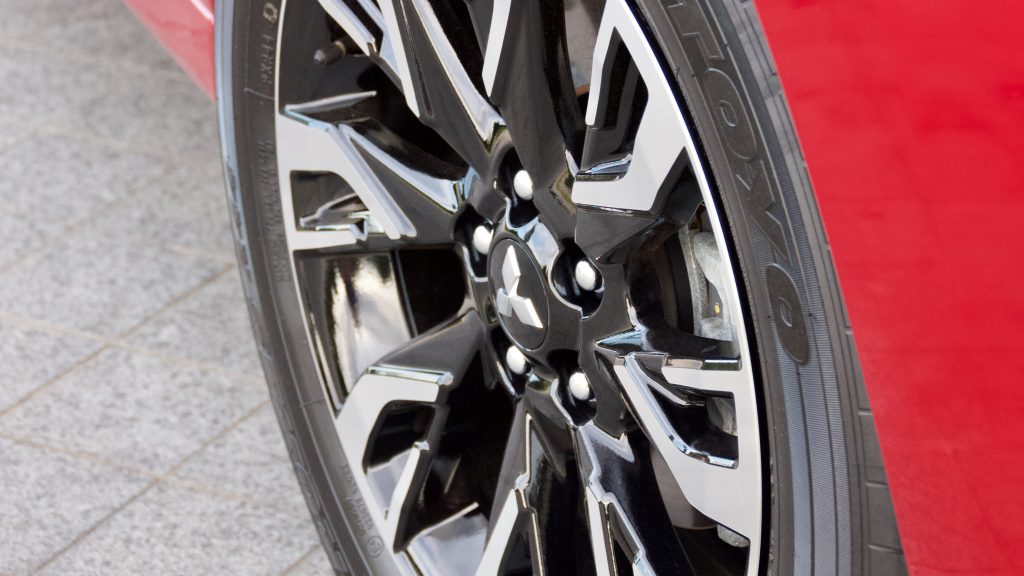
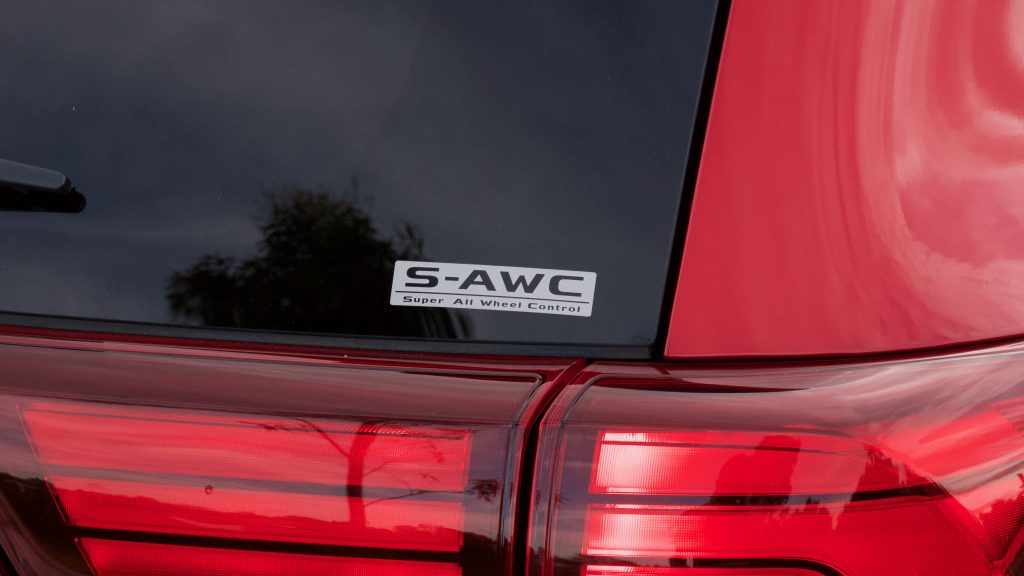
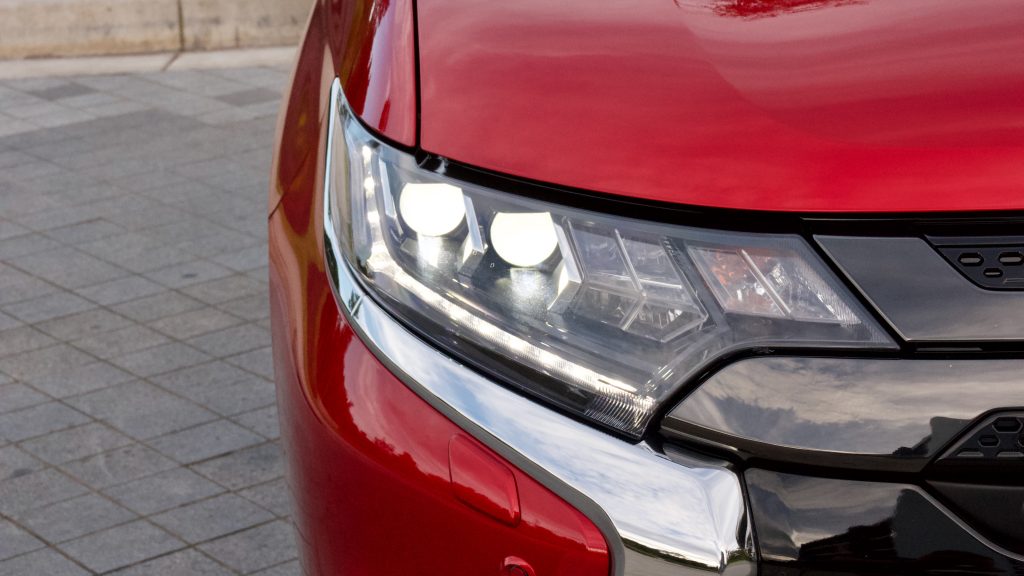
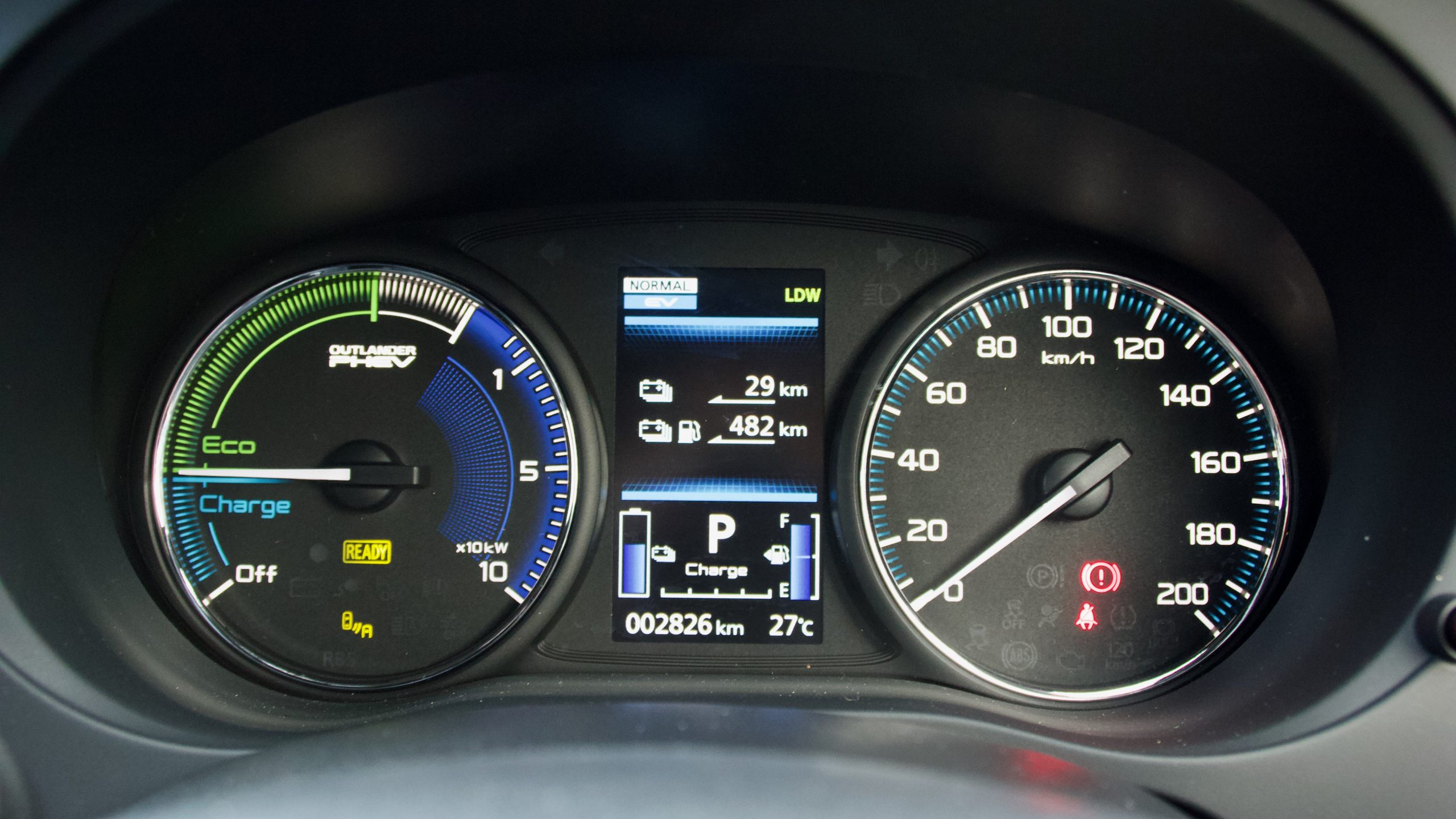
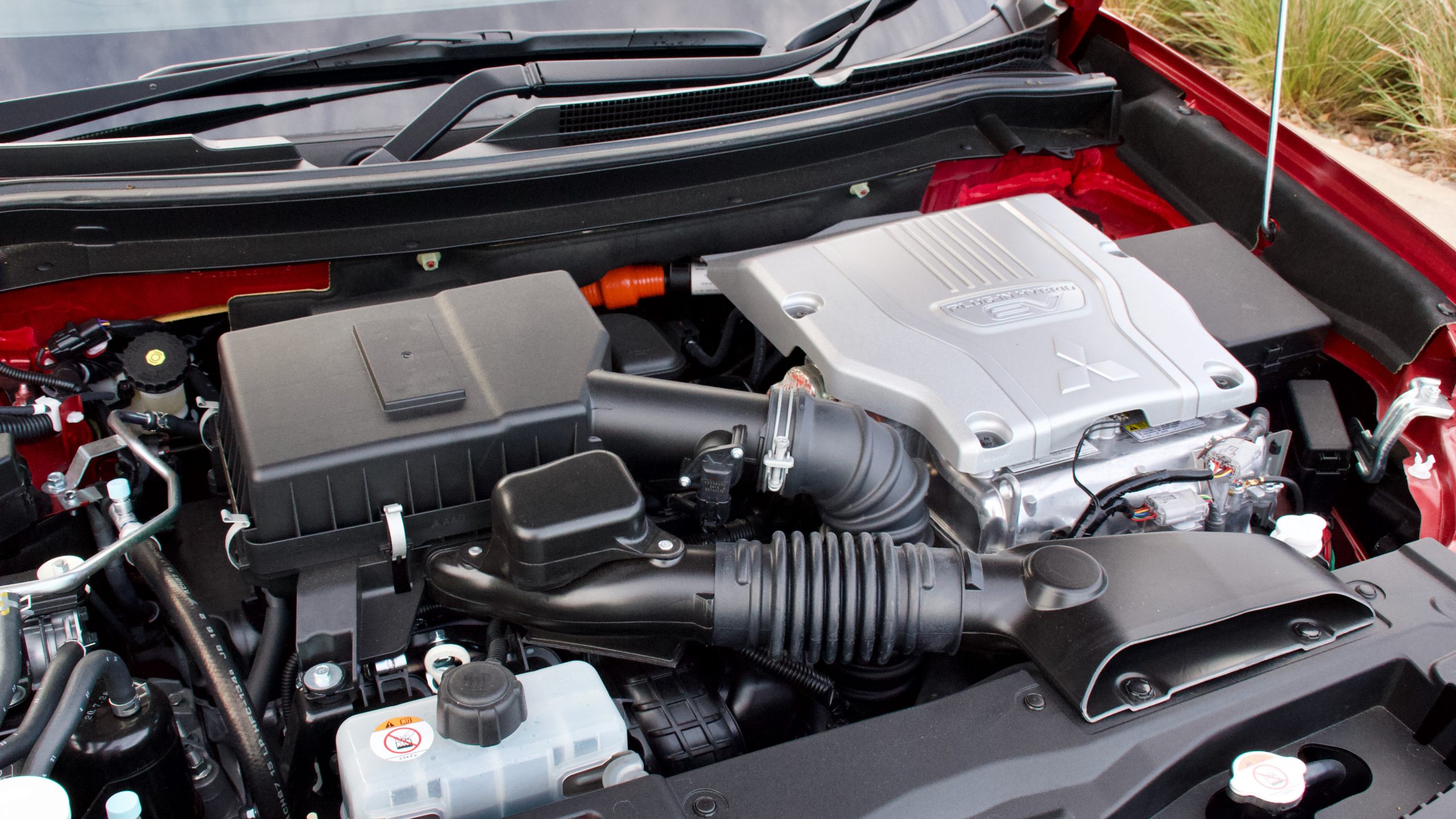
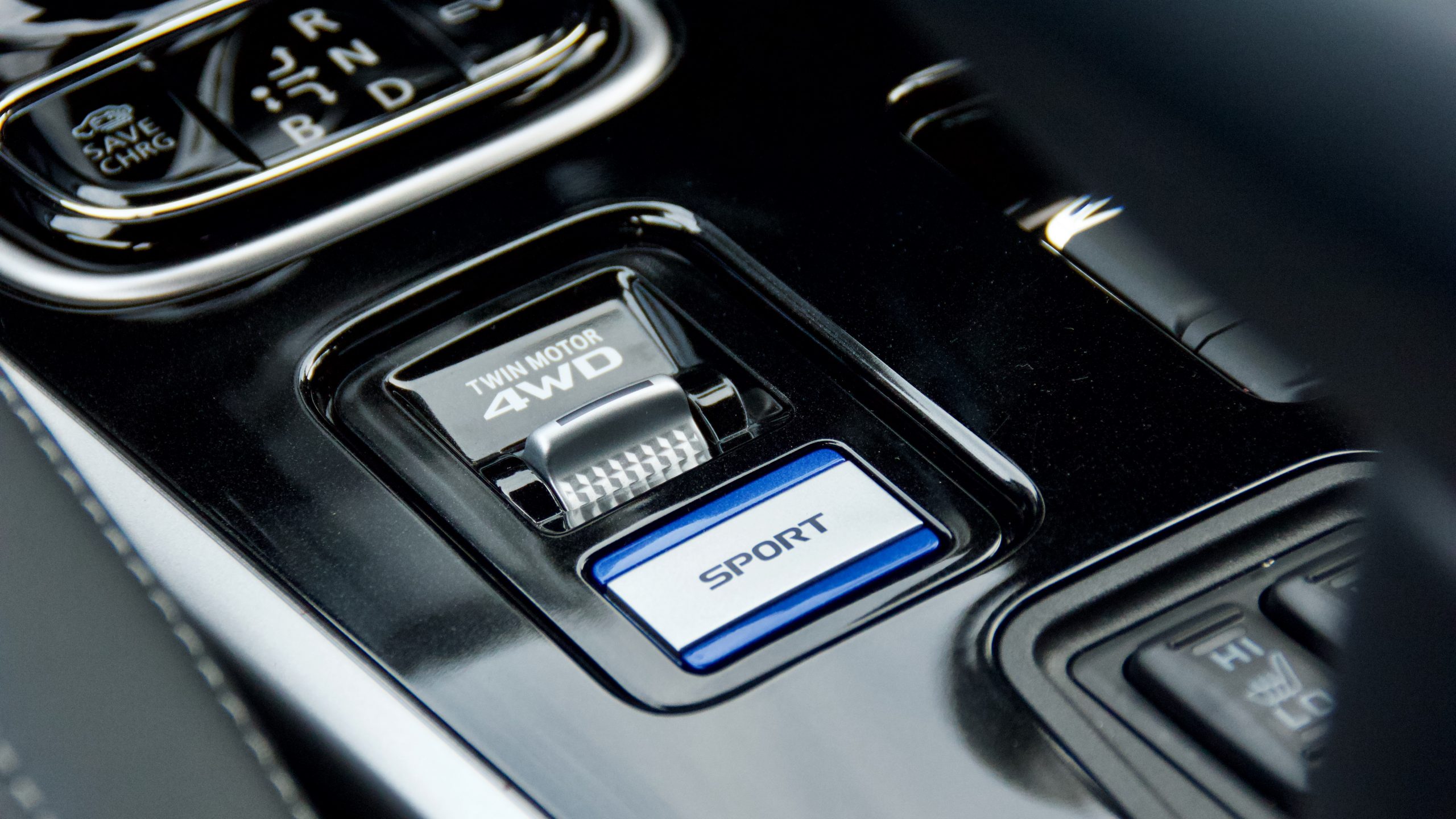
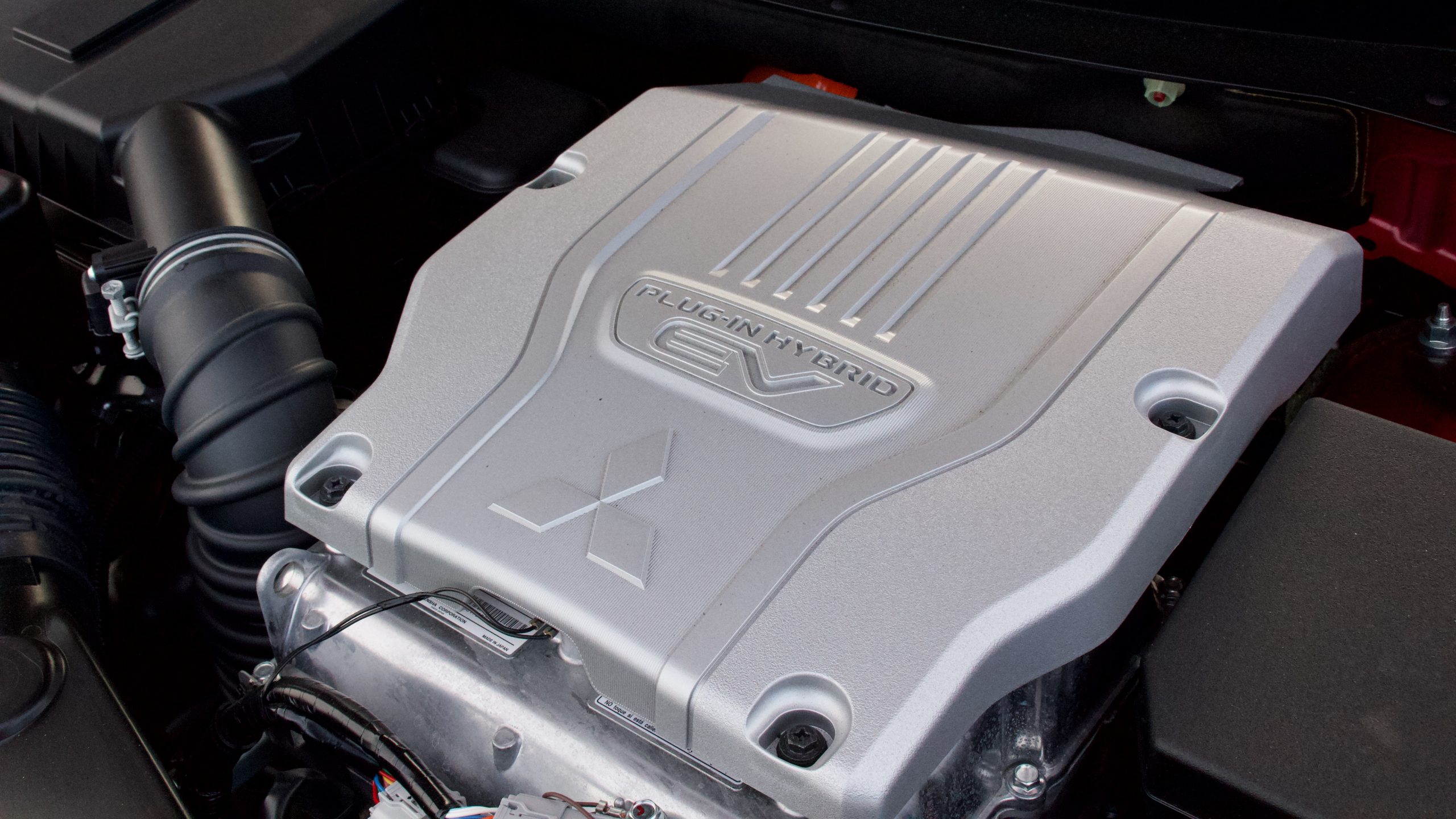
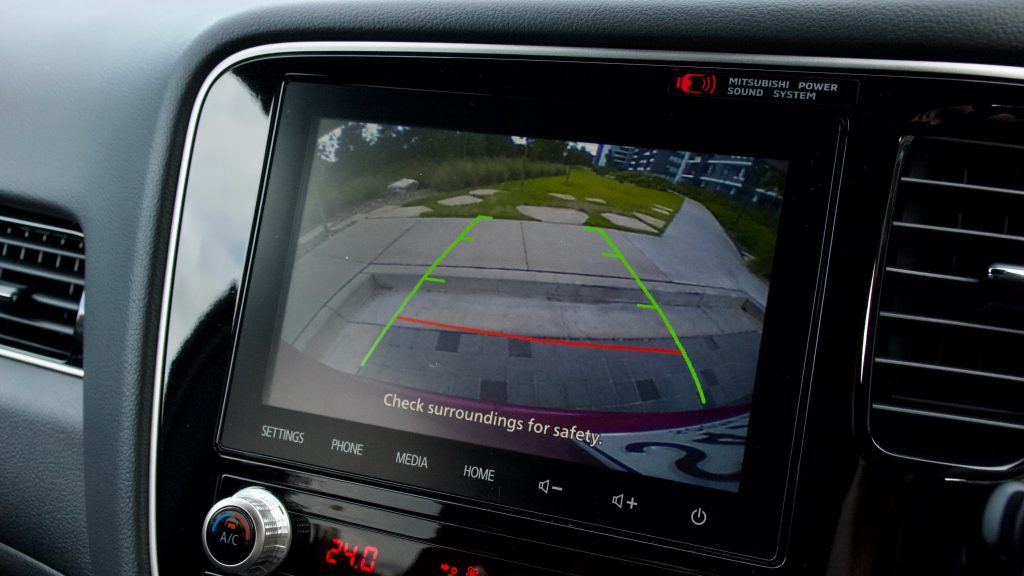
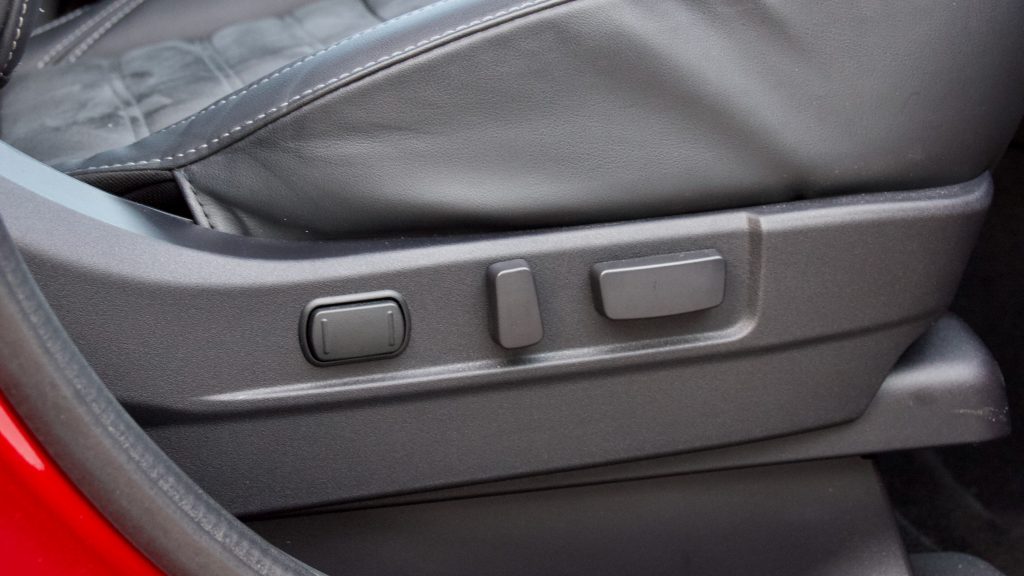
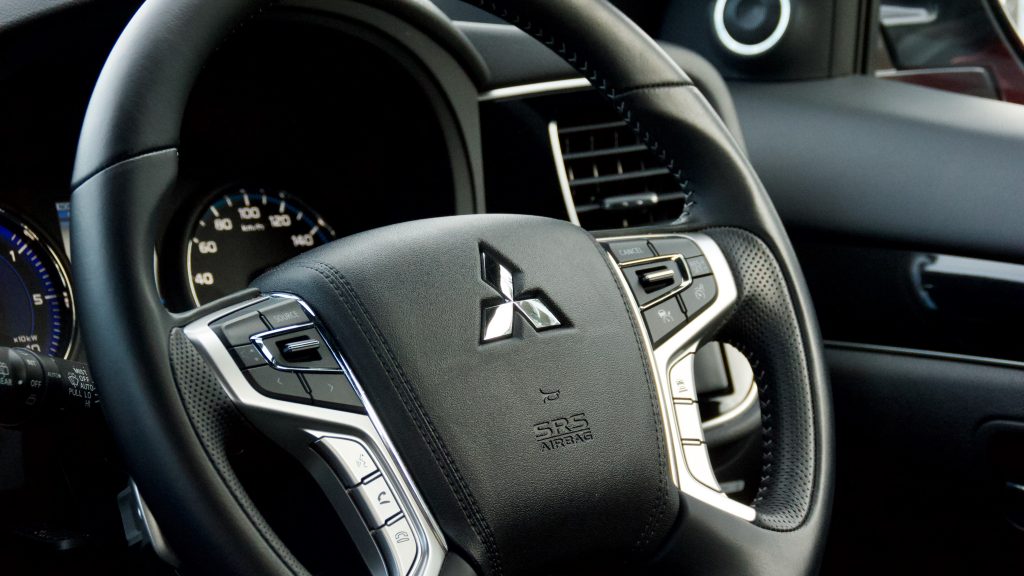
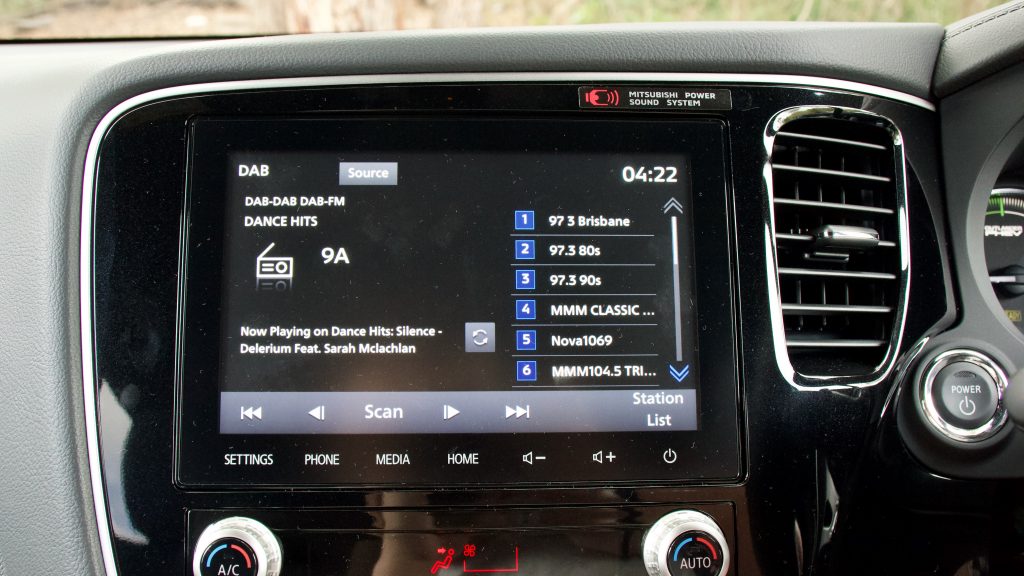
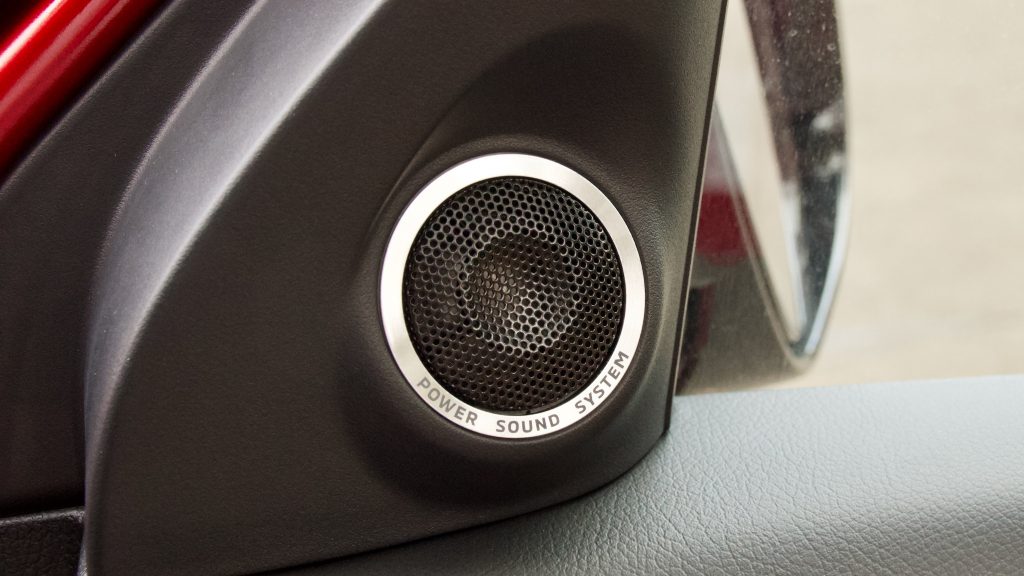
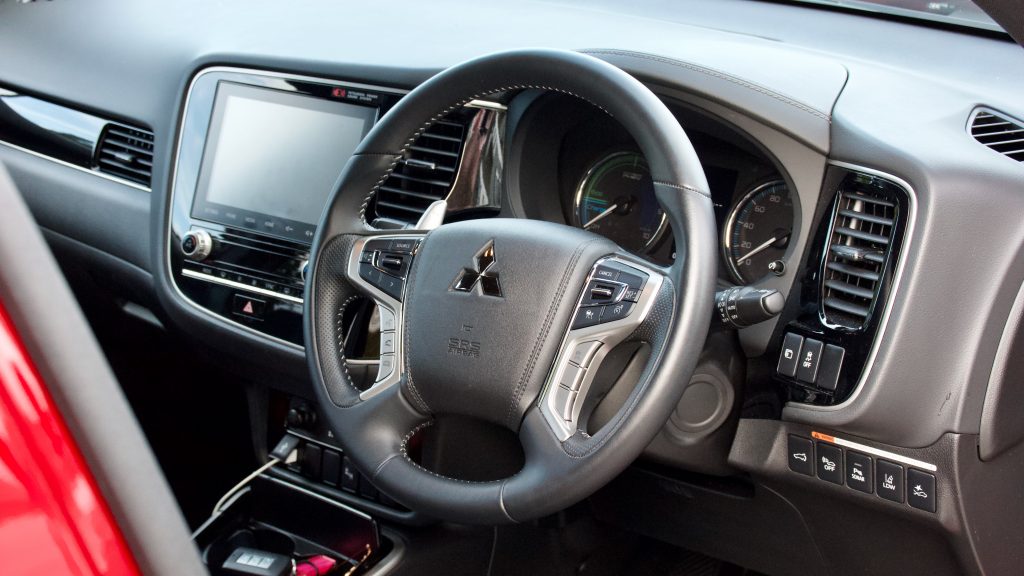
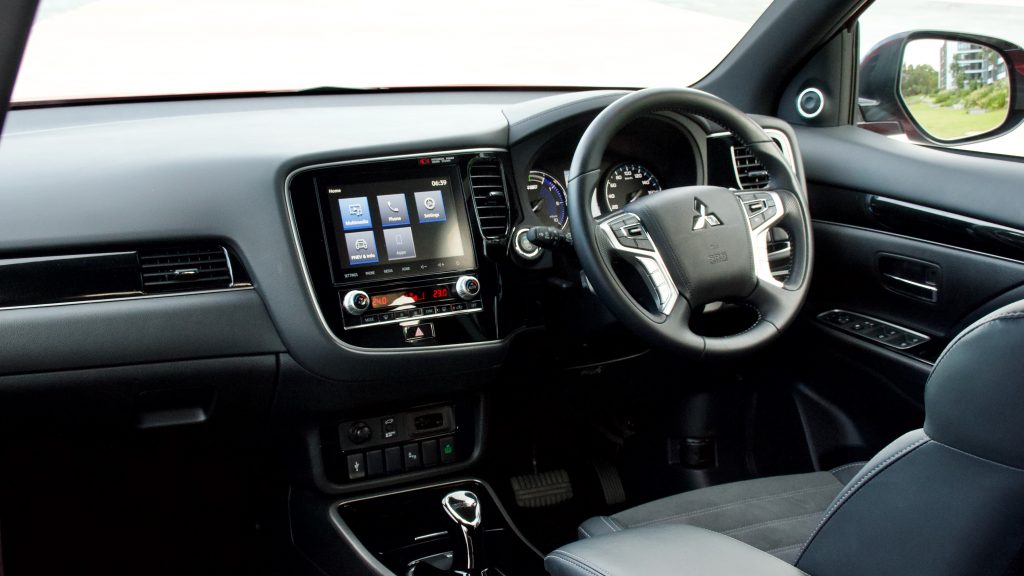
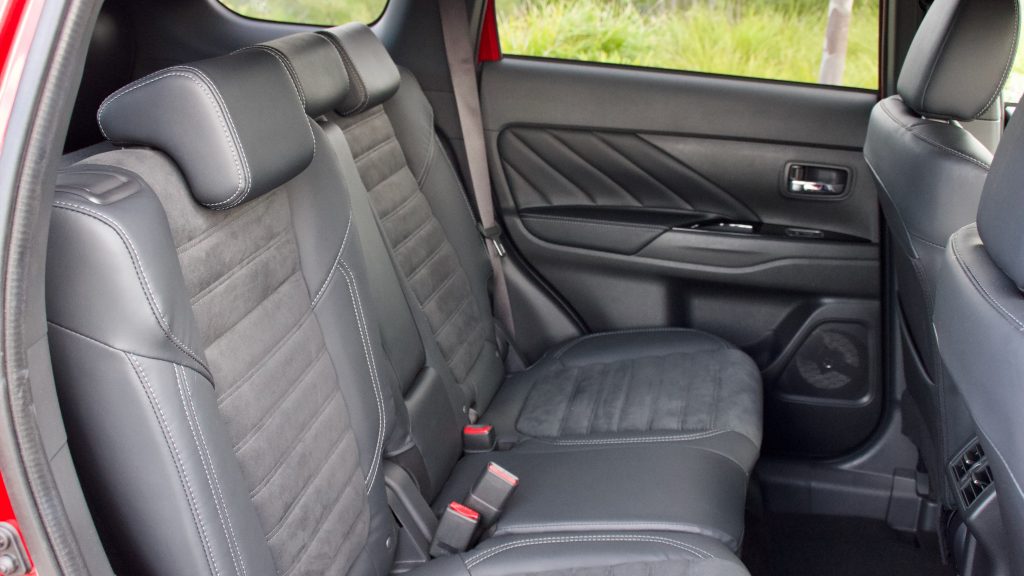
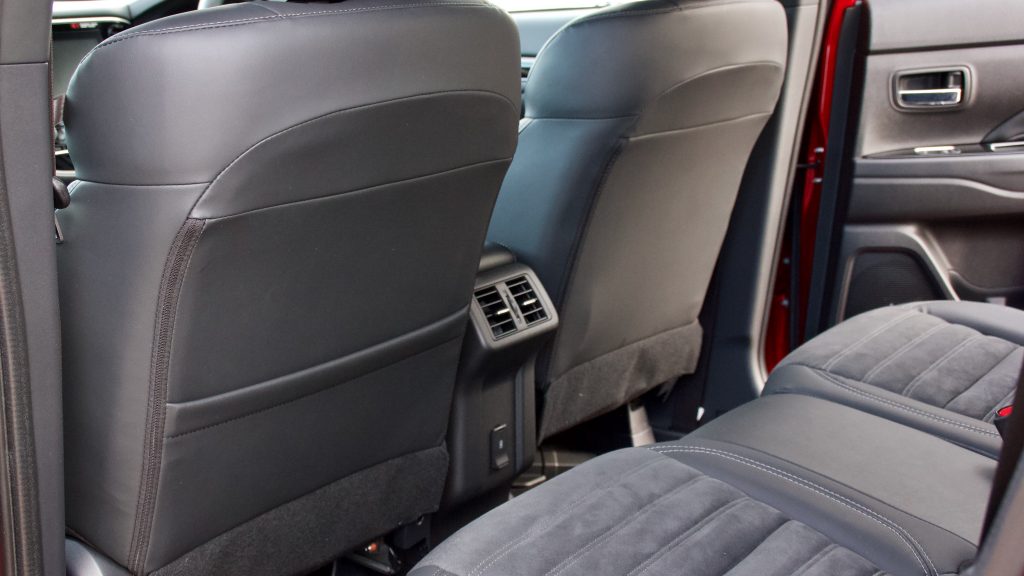
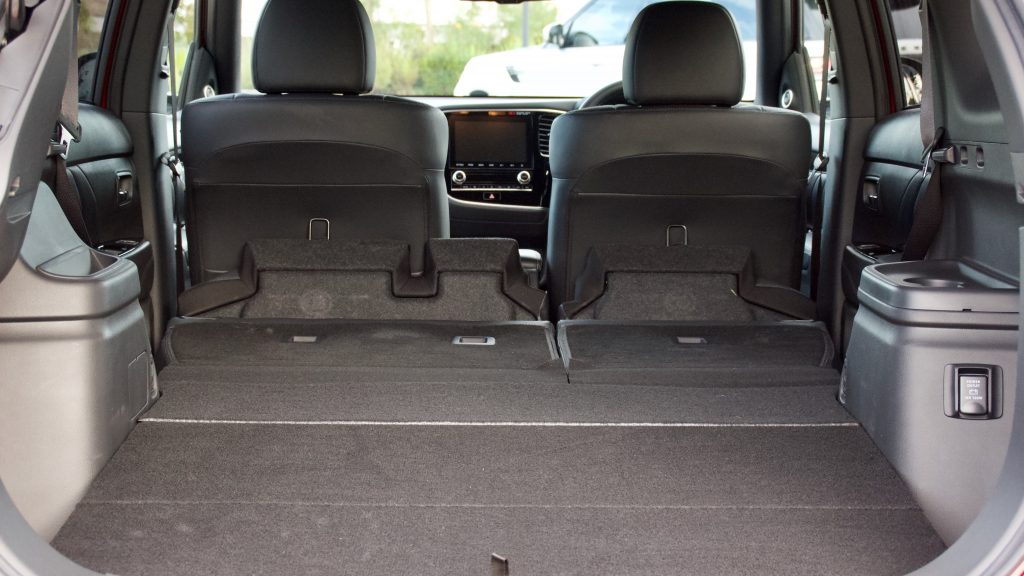
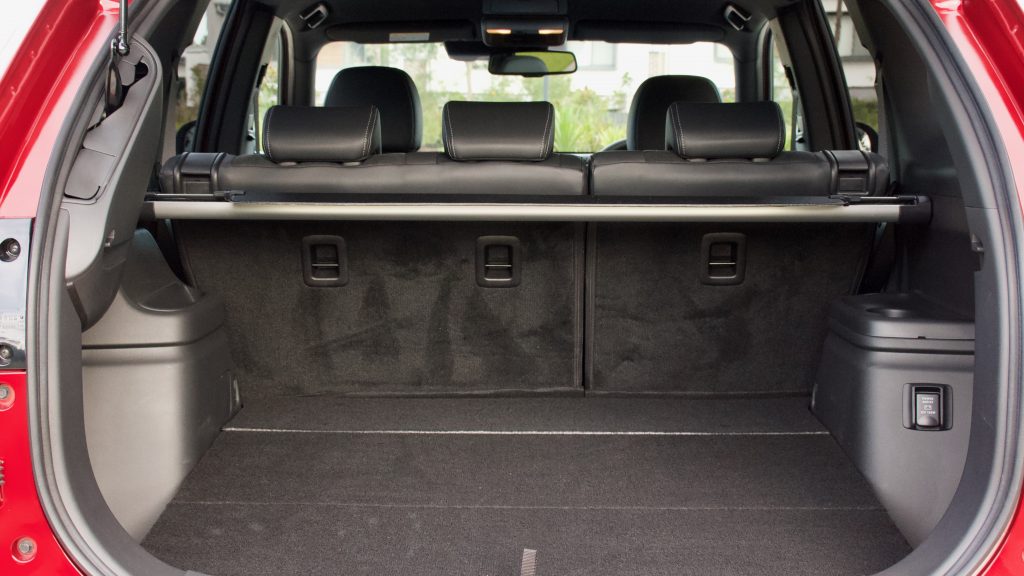
Leave a Reply